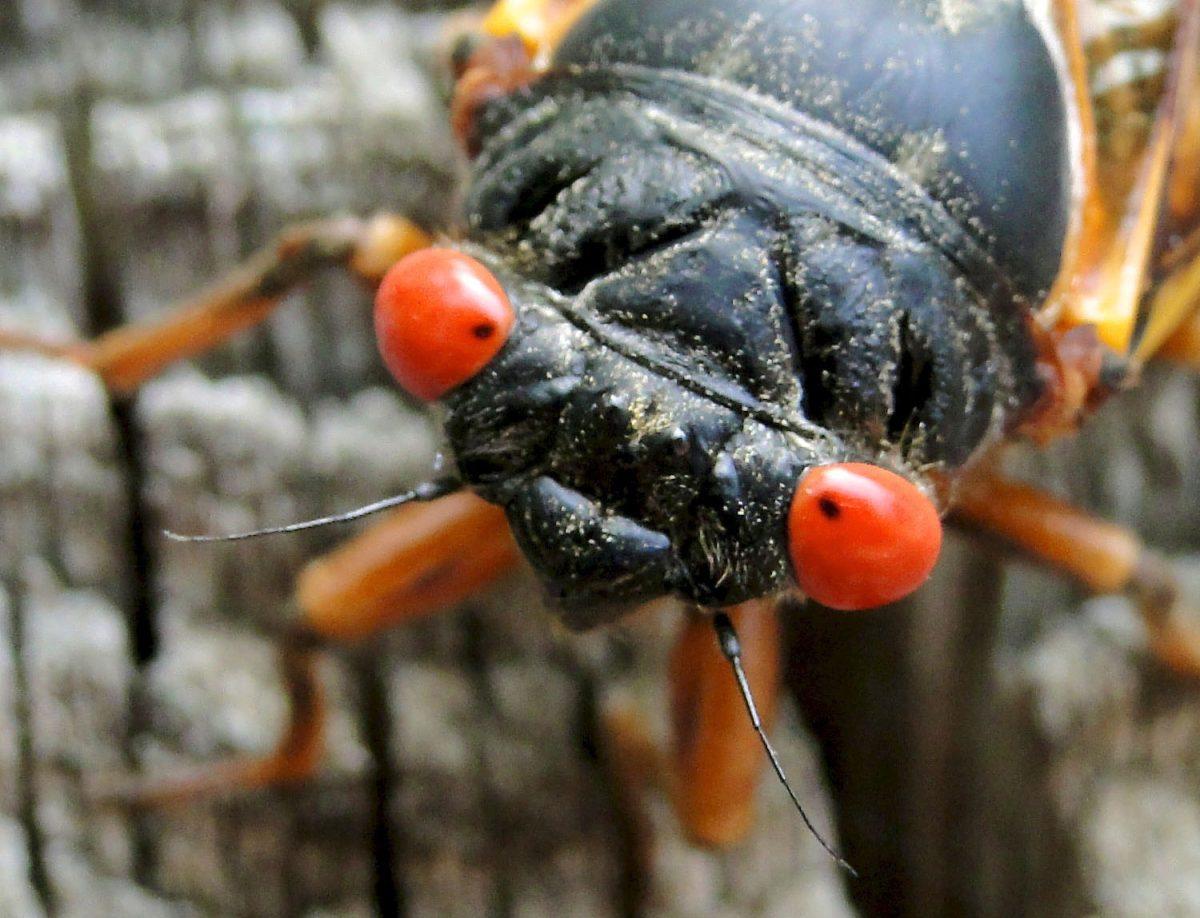
Photo courtesy of Clyde Sorenson
Cicadas are emerging in North Carolina after 17 years of development.
After 17 years, cicadas are beginning to re-emerge in various parts of North Carolina this summer, but Raleigh residents may not need to worry about the chirpy insects.
When cicadas surface, there can be anywhere from 200,000 to 250,000 of the insects per acre. Though the medium-to-large sized insects, often between one and two inches long, generally aren’t considered pests, their habit of cutting into plants to lay their eggs can kill the vegetation and makes them an annoyance to farmers.
While people from other parts of the state are reporting an increase in the population of the loud, orange-eyed invaders, Raleigh has been relatively quiet — a fact N.C. State professor of etymology Clyde Sorenson verified. According to Sorenson, the insects are making their presence known in “more northern latitudes.”
“We know for a fact they’ve been emerging around Greensboro, Winston-Salem, Reedsville and Madison,” Sorenson said. “Raleigh’s not the place to see them.”
Cicadas can be grouped into those emerging on a 17-year cycle and those emerging every 13 years. This summer’s cicadas are of the 17-year variety. Cicada emergences are known as broods, according to the N.C. State and N.C. A&T Cooperative Extension Service webpage about North Carolina ornamental and turf insects.
For example, this year’s emergence is known as “Brood II” within the 17-year cycle. This particular brood last emerged in 1996, and after this year, will not re-emerge until 2030.
There are 14 sequentially numbered broods emerging on a 17-year cycle, and three broods, on a 13-year cycle.
“One name tied to this [brood] is the ‘Great Eastern Brood,’ Sorenson said. “Their range is from the northern Piedmont of North Carolina to Connecticut, New York, Virginia and Maryland.”
Periodical cicadas spend 13 to 17 years as soil-dwelling nymphs, living a foot to a foot and a half underground and feeding on sap sucked from tree roots. At the end of this period, and after the soil warms up, the nymphs dig their way to the surface and emerge, according to Sorenson.
Soil temperatures must reach 64 degrees Fahrenheit for this to happen, Sorenson said, and this year’s unseasonably cool spring delayed Brood II’s emergence.
“Ultimately, though, their sheer biomass means there are simply too many periodical cicadas for predators to consume,” Sorenson said. “The cicadas just swamp the predators.”
“At times, this overabundance of protein-rich insects has proved a boon,” Sorenson said.
“Native Americans habitually ate them in large quantities. In New York, the Onondaga tribe was sustained by cicadas during famine,” Sorenson said. “This brood has also been known as the ‘Onondaga brood.’”
According to Hannah Burrack, extension specialist and assistant professor of entomology, organic pesticides are generally ineffective against cicadas. Wrapping netting around vulnerable plants and tree branches before cicadas emerge is the best option.
Six to seven weeks after the females have finished laying eggs, they will hatch and tiny cicada nymphs will crawl down to earth and burrow into the soil, there to remain until the next emergence, according to the Cooperative Extension Service webpage.
In North Carolina, most Brood II cicadas are currently mating, and according to Sorenson, “most will have died off in another two weeks.”
He continues to monitor their activity, though.
Sorenson knows the insects can irritate people, but he asks those living in their range to try and appreciate the emergence of periodical cicadas as yet another of nature’s wonders.
“If you find them, you should feel blessed you have them on your property, or on your parents’ property,” Sorenson said. “It’s one of the coolest natural phenomena in the world, and it happens nowhere else.”